Family: Diprionidae
Family common name: coniferconifer:
a usually evergreen tree characterized by reproductive cones; e.g., pine, fir, spruce, larch, etc.
sawflies
Subfamily: Diprioninae
Genus: Diprion Schrank, 1802
Subgenera: none
The Diprionidae are known as the coniferconifer:
a usually evergreen tree characterized by reproductive cones; e.g., pine, fir, spruce, larch, etc.
sawflies, though they are not the only family to use coniferconifer:
a usually evergreen tree characterized by reproductive cones; e.g., pine, fir, spruce, larch, etc.
trees as host (others include Siricidae, Pamphiliidae, Xyelidae, and some genera of Tenthredinidae). Many are destructive pests as larvaelarva:
the immature stage of holometabolous insects
 , and so their biology has been more extensively studied than some other groups. Diprionids have stout bodies and distinctive antennal characteristics that make adults easy to recognize (Furniss and Carolin 1977Furniss and Carolin 1977:
, and so their biology has been more extensively studied than some other groups. Diprionids have stout bodies and distinctive antennal characteristics that make adults easy to recognize (Furniss and Carolin 1977Furniss and Carolin 1977:
Furniss RL and Carolin VM. 1977. Western forest insects. United States Deptartment of Agriculture Forest Service Miscellaneous Publication 1339: 1-655.).
Diprion is an Old WorldOld World:
The Eastern Hemisphere; the continents of Asia, Australia, Africa and Europe
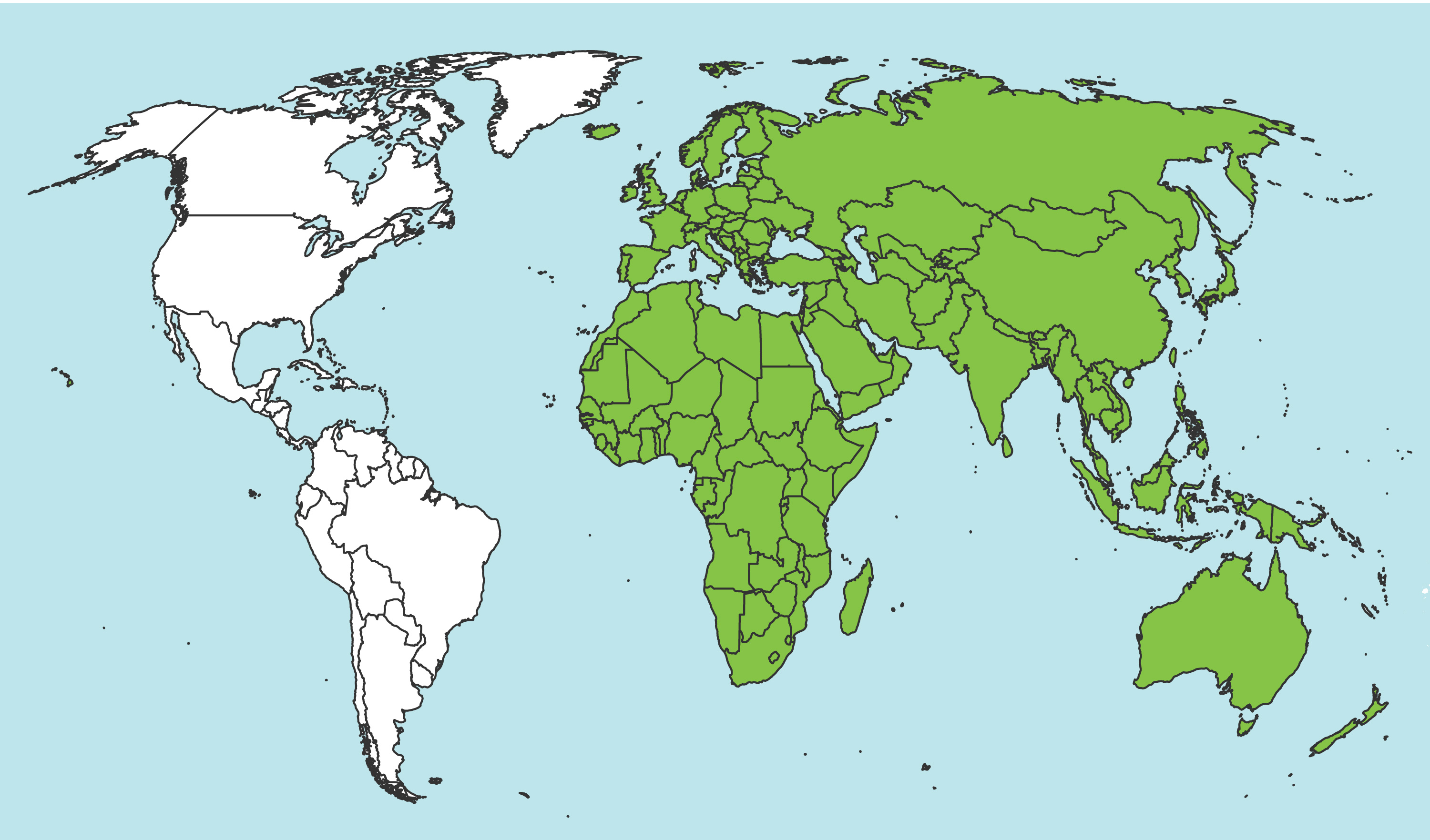 genus; only Diprion similis, the introduced pine sawfly, is known in North America where it can be an occasional pest of pine trees (Tsao and Hodson 1956Tsao and Hodson 1956:
genus; only Diprion similis, the introduced pine sawfly, is known in North America where it can be an occasional pest of pine trees (Tsao and Hodson 1956Tsao and Hodson 1956:
Tsao CH and Hodson AC. 1956. The effect of different host species on the oviposition and survival of the introduced pine sawfly. Journal of Economic Entomology 49 (3): 400-401., Lyons 2014Lyons 2014:
Lyons DB. 2014. X Introduced pine sawfly ( Diprion similis [Hartig]) (Hymenoptera: Diprionidae). In: Van Driesche R and Reardon R eds. The use of classical biological control to preserve forests in North America. USDA Forest Service Forest Health Technology Enterprise Team FHTET-2013-2.).
There are 13 described species worldwide. Just one introduced species occurs in North America (Taeger et al. 2010Taeger et al. 2010:
Taeger A, Blank SM, and Liston AD. 2010. World Catalog of Symphyta (Hymenoptera). Zootaxa 2580: 1-1064.).
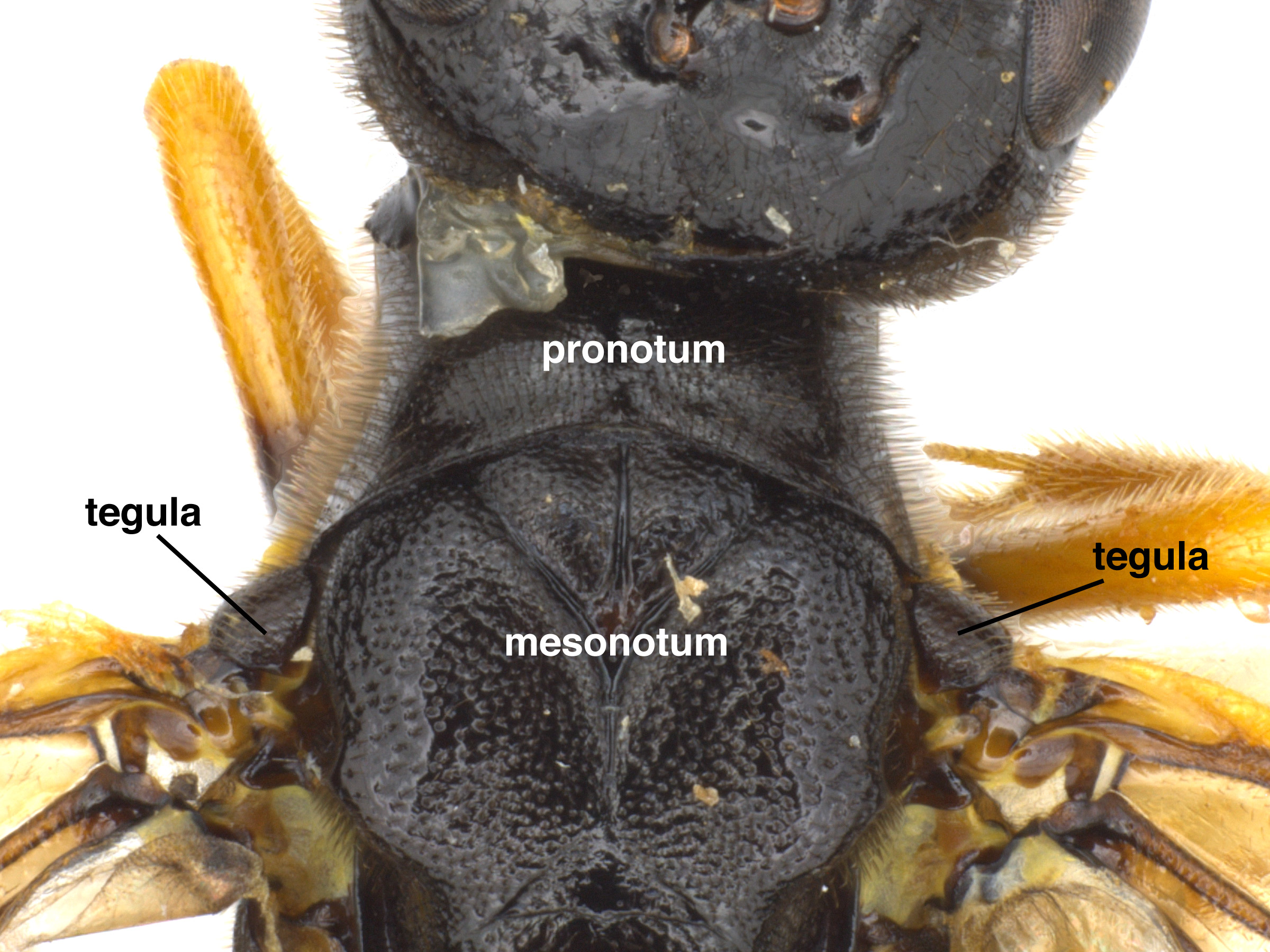 strongly constricted medially, as seen from above (Goulet 1992Goulet 1992:
strongly constricted medially, as seen from above (Goulet 1992Goulet 1992: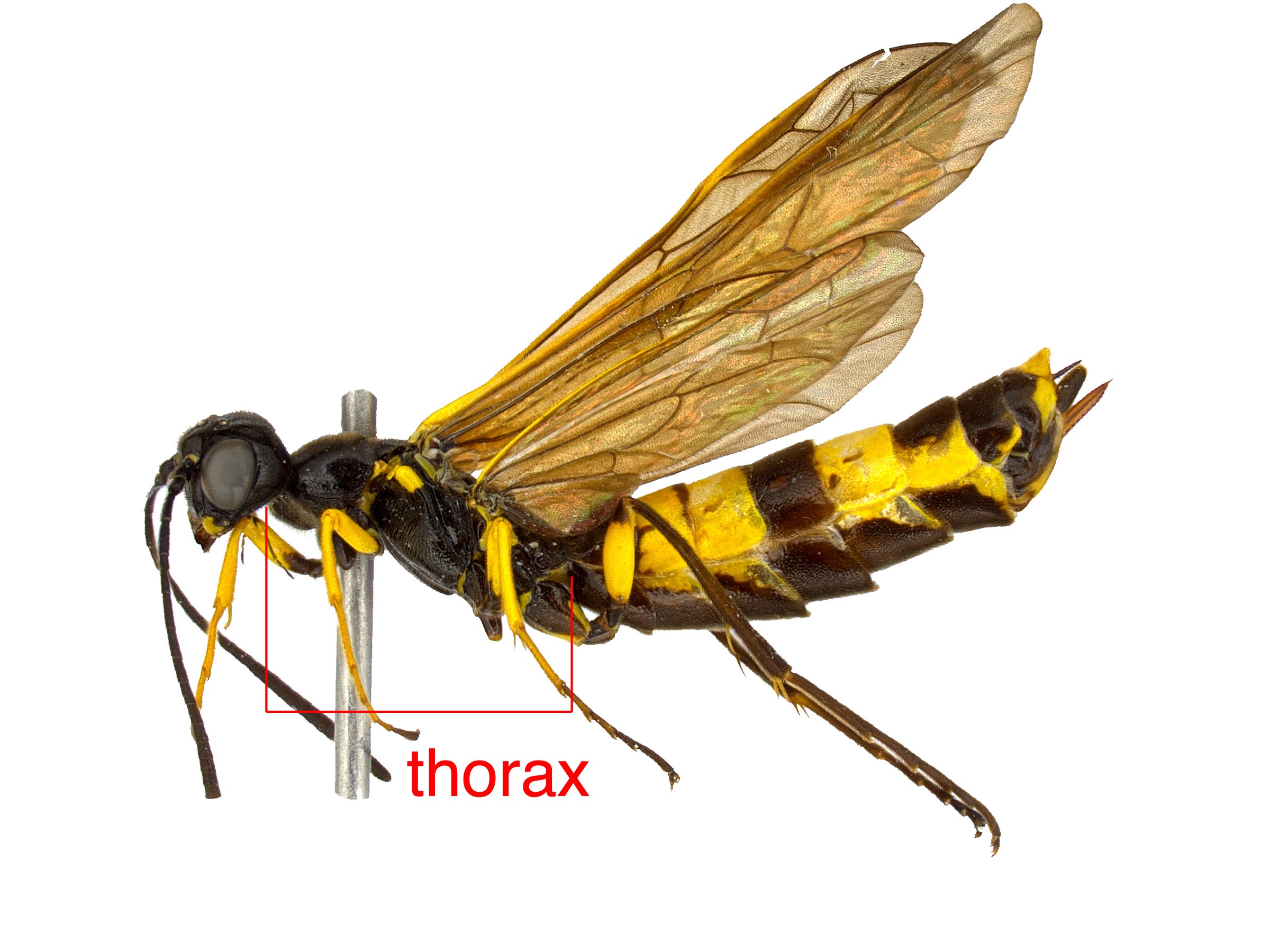 , no distinct “neck” (Goulet 1992Goulet 1992:
, no distinct “neck” (Goulet 1992Goulet 1992: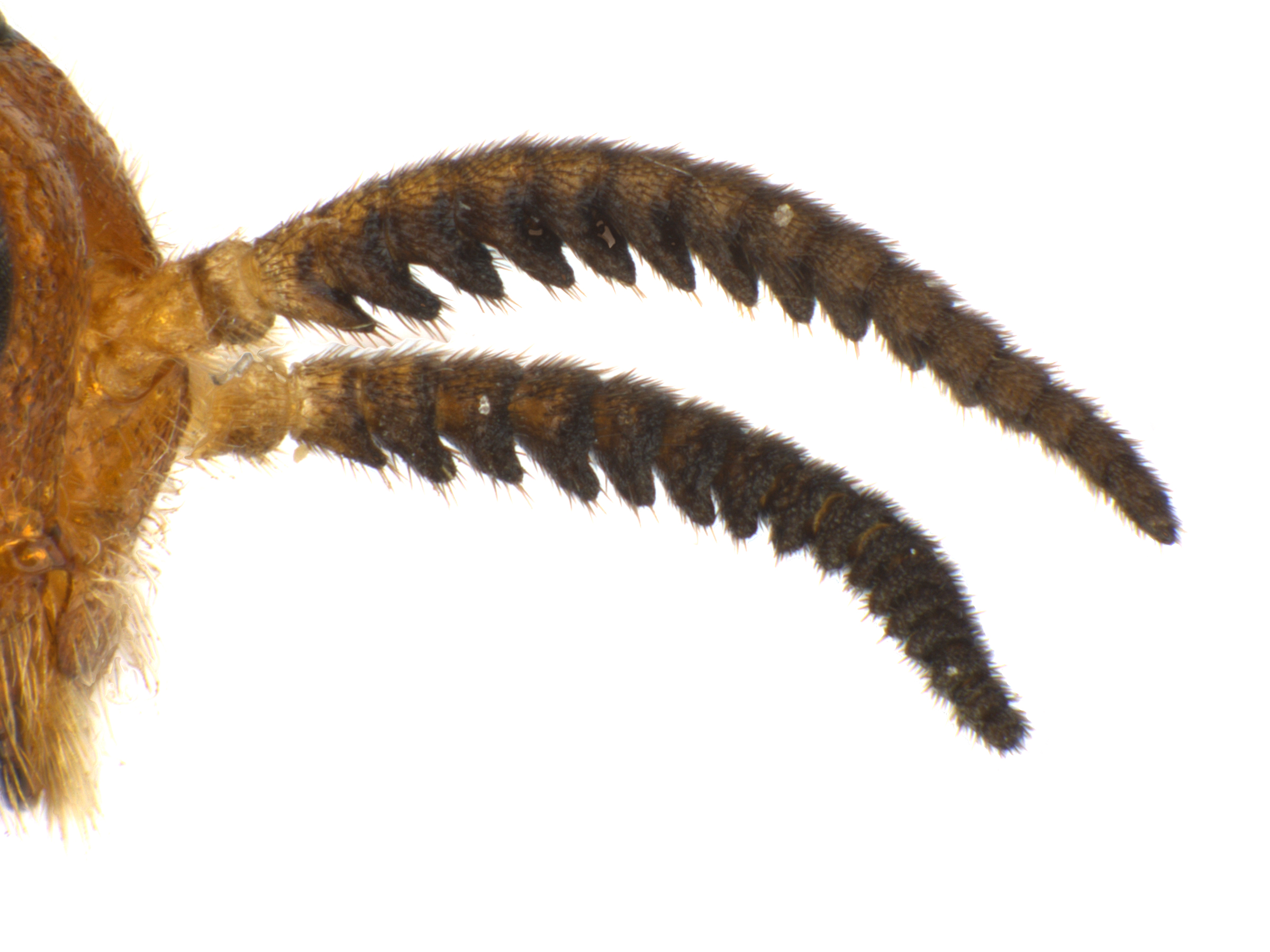 in females, bipectinatebipectinate:
in females, bipectinatebipectinate: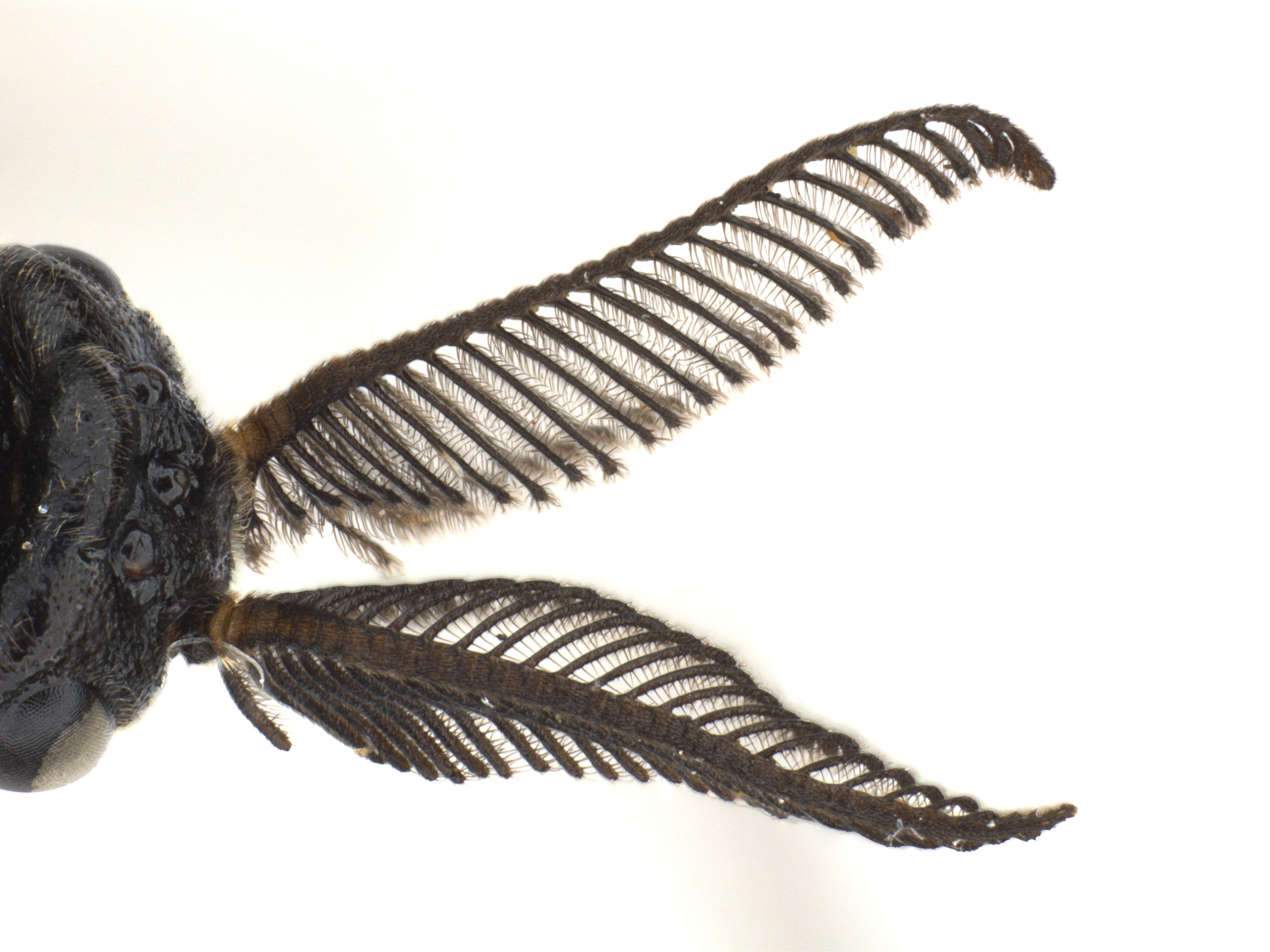 in males (Goulet 1992Goulet 1992:
in males (Goulet 1992Goulet 1992: 1A and 2A of fore wingfore wing:
1A and 2A of fore wingfore wing: connected by a crossveincrossvein:
connected by a crossveincrossvein: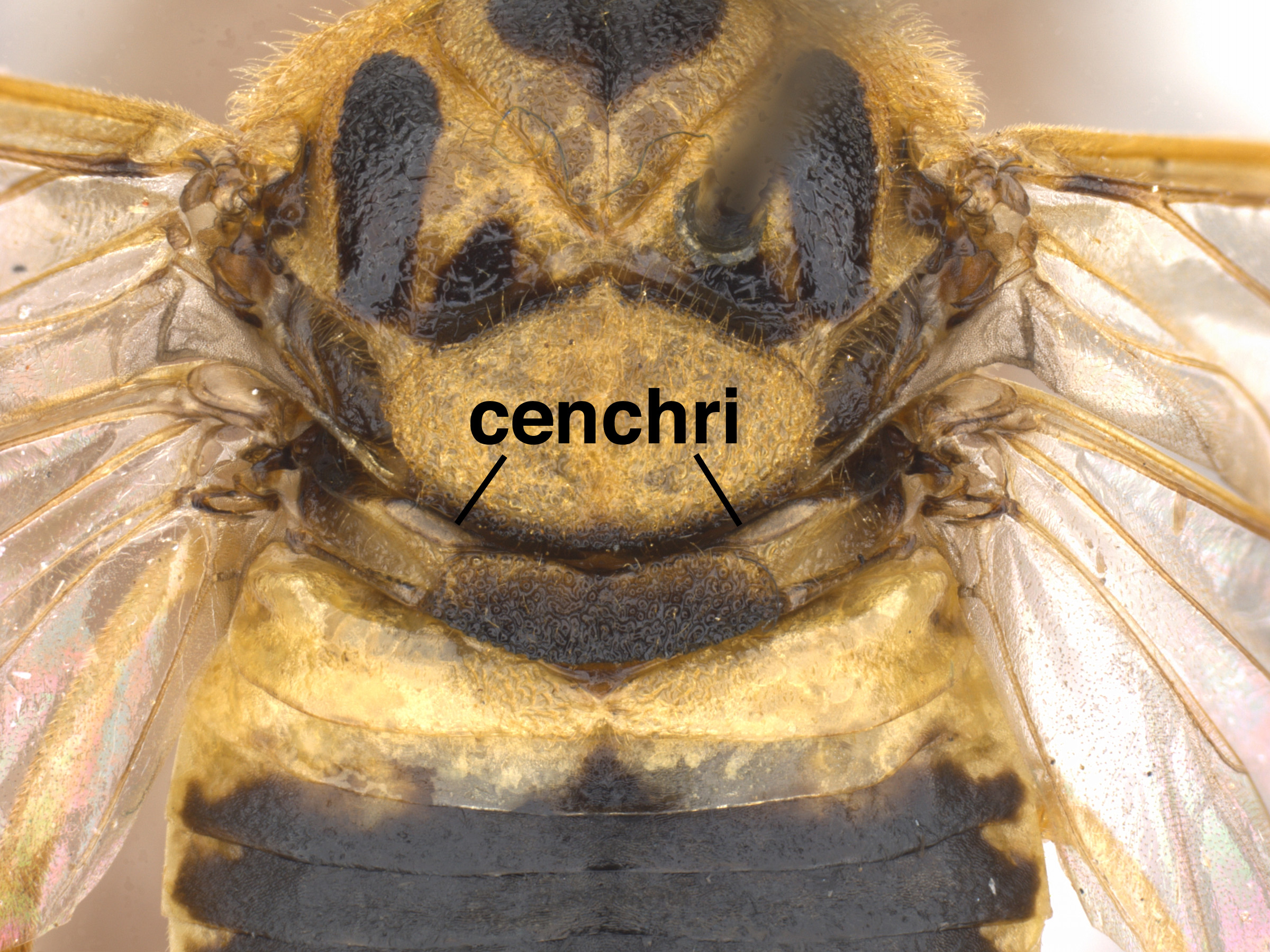 about half of the distance between cenchricenchrus:
about half of the distance between cenchricenchrus: (Goulet 1992Goulet 1992:
(Goulet 1992Goulet 1992: ; length of metascutellummetascutellum:
; length of metascutellummetascutellum: greater than width of cenchruscenchrus:
greater than width of cenchruscenchrus: (Goulet 1992Goulet 1992:
(Goulet 1992Goulet 1992:Diprionidae are easily recognized by the distinctive antennaeantenna:
the sensory organ emerging from the front of the head, usually between the compound eyes and above the clypeus; includes the flagellum, scape and pedicel
 of both sexes, and are characterized by small, stout bodies. Diprion can be separated from other genera in the family by the small cenchricenchrus:
of both sexes, and are characterized by small, stout bodies. Diprion can be separated from other genera in the family by the small cenchricenchrus:
a sclerotized eliptical lobe on the metascutum used to provide friction with underside of wings to hold them in place on the dorsum of the body while in rest
 , large mesoscutellummesoscutellum:
, large mesoscutellummesoscutellum:
the anterior section of the scutellum
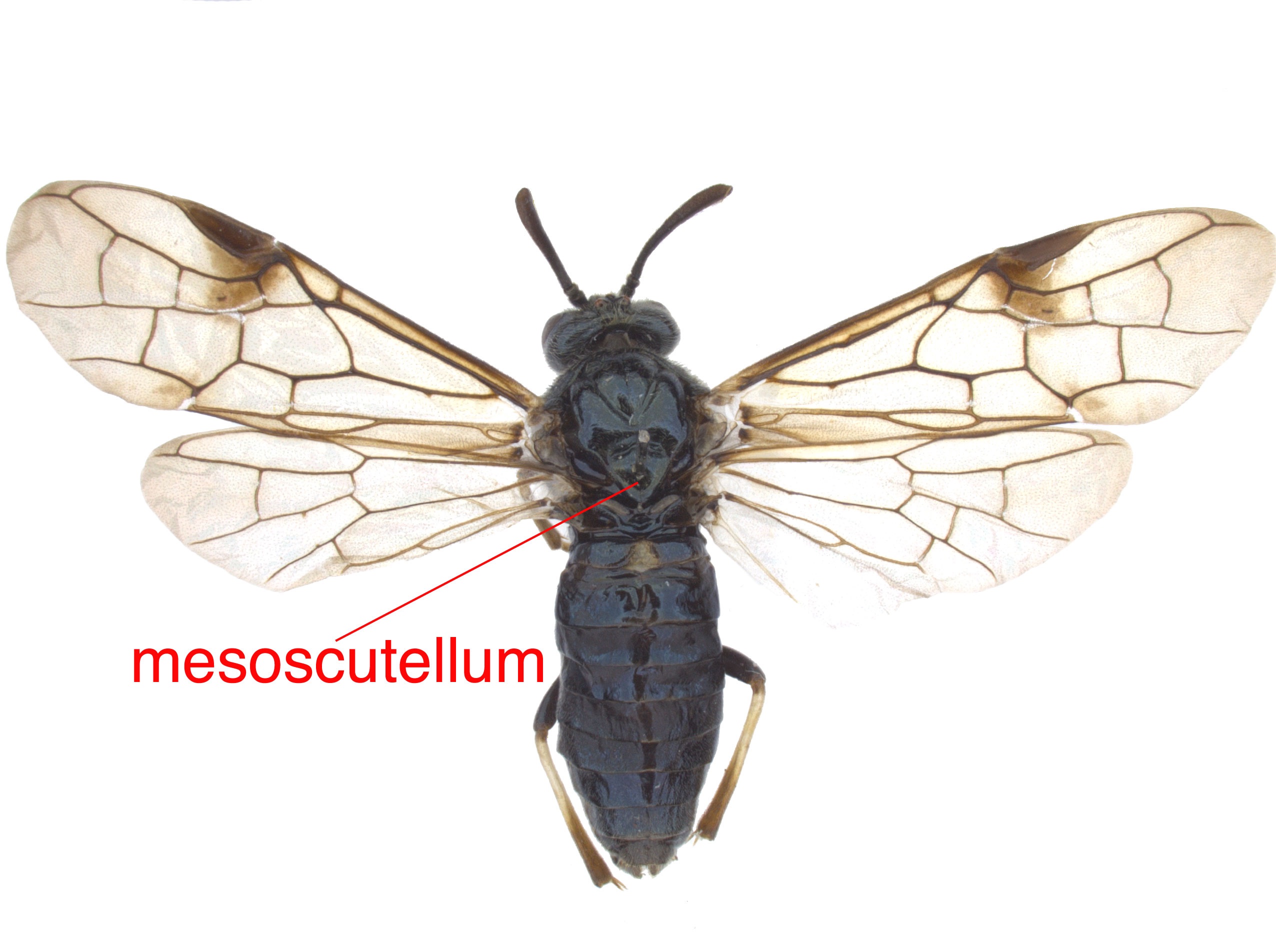 , and the completely bipectinatebipectinate:
, and the completely bipectinatebipectinate:
describing pectinate antennae of which each segment has two projections, one on either side
 male antennaeantenna:
male antennaeantenna:
the sensory organ emerging from the front of the head, usually between the compound eyes and above the clypeus; includes the flagellum, scape and pedicel
 (Smith 1971bSmith 1971b:
(Smith 1971bSmith 1971b:
Smith DR. 1971b. The genus Zadiprion Rohwer (Hymenoptera: Diprionidae). Proceedngs of the Entomological Society of Washington 73 (2): 187-197., Goulet 1992Goulet 1992:
Goulet H. 1992. The genera and subgenera of the sawflies of Canada and Alaska: Hymenoptera. Symphyta. The insects and arachnids of Canada. Part 20. Agriculture Canada Publication.).
Diprion pini is a widespread pest of Pinus sylvestris (Scots pine) in the entire PalearcticPalearctic:
describing the region of the northern hemisphere that includes Europe, Asia south to the Himalayas and northern Africa
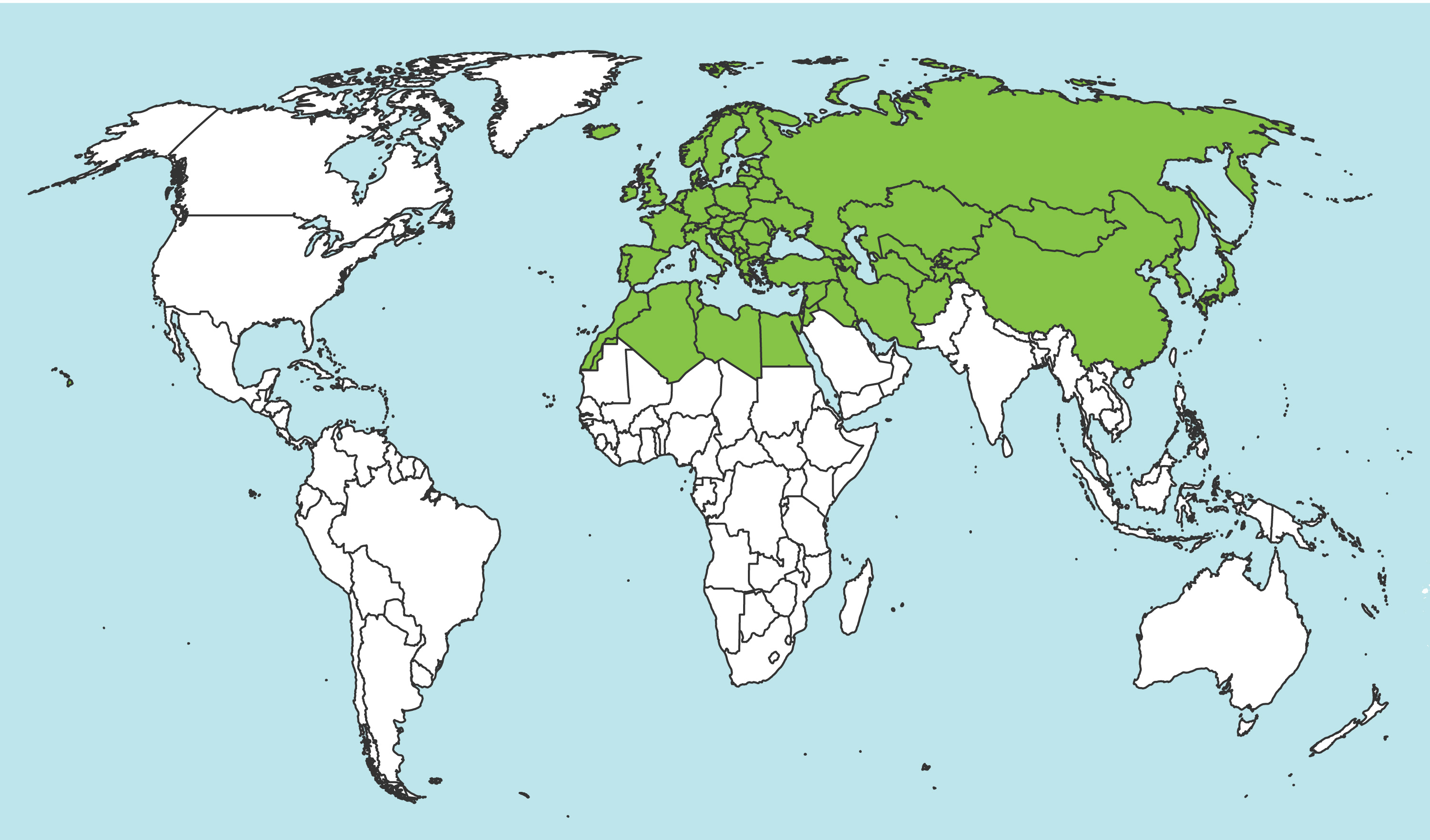 region. It has a very similar biology to D. similis, in that it is a defoliatordefoliator:
region. It has a very similar biology to D. similis, in that it is a defoliatordefoliator:
an insect that defoliates
that feeds in large groups and has two generations per year. Additionally, D. pini can remain in diapausediapause:
a non-active period of no development; sawflies often enter diapause as a prepupa or pupa to overwinter
for several years, so it is difficult to determine or control the population size during any one year (Molet 2011Molet 2011:
Molet TP. 2011. Diprion pini . Cooperative Agricultural Pest Survey (CAPS) datasheet. Purdue University. 10 pp.). The estimated annual cost of the reduction in tree growth in Europe as of 1997 exceeds $6 million USD (Beaudoin et al. 1997Beaudoin et al. 1997:
Beaudoin L, Allais JP, and Geri C. 1997. Enzymatic polymorphism in natural populations of the sawfly Diprion pini L (Hymenoptera: Diprionidae). Annales des Sciences Forestieres 54: 505-512.). This species has more than one pine host, including many species like P. sylvestris that occur and are grown in North America for timber (Molet 2011Molet 2011:
Molet TP. 2011. Diprion pini . Cooperative Agricultural Pest Survey (CAPS) datasheet. Purdue University. 10 pp.).
Larvae in North America feed on several species of pine. The preferred host species is Pinus strobus (eastern white pine). Other hosts include Pinus banksiana (Jack pine), Pinus flexilis (limber pine), Pinus ponderosa (ponderosa pine), Pinus resinosa (red pine), Pinus rigida (pitch pine), Pinus taeda (loblolly pine), Pinus virginiana (Virginia pine), Pinus sylvestris (Scots pine) (Lyons 2014Lyons 2014:
Lyons DB. 2014. X Introduced pine sawfly ( Diprion similis [Hartig]) (Hymenoptera: Diprionidae). In: Van Driesche R and Reardon R eds. The use of classical biological control to preserve forests in North America. USDA Forest Service Forest Health Technology Enterprise Team FHTET-2013-2.), Pinus monticola (western white pine), and Pinus contorta (lodgepole or shore pine) (Looney et al. 2016Looney et al. 2016:
Looney C, Smith DR, Collman SJ, Langor DW, and Peterson MA. 2016. Sawflies (Hymenoptera, Symphyta) newly recorded from Washington State. Journal of Hymenoptera Research 49: 129-159. https://doi.org/10.3897/JHR.49.7104).
Diprion similis females oviposit into slits cut longitudinally along the needle, usually several in a line, and up to 19 on a single needle. After hatching, larvaelarva:
the immature stage of holometabolous insects
 feed gregariously from the tip of the needle to the basebase:
feed gregariously from the tip of the needle to the basebase:
the beginning or most proximal area of any structure
. Females have 6 larval instars while males have 5, and both sexes become more solitary around the third or fourth instarinstar:
a stage of development between molts in insects; often is a larval stage
. During this phase, larvaelarva:
the immature stage of holometabolous insects
 move to other parts of the tree, or in cases of high abundance, to other nearby trees. At maturity, the larvalarva:
move to other parts of the tree, or in cases of high abundance, to other nearby trees. At maturity, the larvalarva:
the immature stage of holometabolous insects
 builds a silken cocoon on a solid surface, usually in the tree. Depending on the generation, the prepupaprepupa:
builds a silken cocoon on a solid surface, usually in the tree. Depending on the generation, the prepupaprepupa:
the active, non-feeding life stage in which the larva prepares to enter the pupal stage
may overwinter in the cocoon before pupating. It is bivoltinebivoltine:
describing a life cycle with two generations per calendar year
in most of its North American range, but has been recorded as univoltineunivoltine:
describing an insect with a life cycle of one generation per year
in Asia (Lyons 2014Lyons 2014:
Lyons DB. 2014. X Introduced pine sawfly ( Diprion similis [Hartig]) (Hymenoptera: Diprionidae). In: Van Driesche R and Reardon R eds. The use of classical biological control to preserve forests in North America. USDA Forest Service Forest Health Technology Enterprise Team FHTET-2013-2.).
Diprion similis is considered a pest of economic importance because outbreaks of this species in pine stands have historically caused significant damage. Coniferousconiferous:
describing a conifer
trees do not regrow foliage every year, so heavy defoliation, especially in combination with other stress, can lead to mortality. A 1970 outbreak of D. similis in Ontario defoliated about 95,000 acres of white pines (Lyons 2014Lyons 2014:
Lyons DB. 2014. X Introduced pine sawfly ( Diprion similis [Hartig]) (Hymenoptera: Diprionidae). In: Van Driesche R and Reardon R eds. The use of classical biological control to preserve forests in North America. USDA Forest Service Forest Health Technology Enterprise Team FHTET-2013-2.).
World: The species of Diprion are generally found in China, Korea, and Japan west to central Asia. Two species range farther west into Europe. One occurs in North America (Xiao et al. 1983Xiao et al. 1983:
Xiao G, Huange X, and Zhou S. 1983. Sawflies of the genus Diprion from China (Hymenoptera, Symphyta: Diprionidae). Scientia Silvae Sinicae 19 (3): 277-283., Taeger et al. 2010Taeger et al. 2010:
Taeger A, Blank SM, and Liston AD. 2010. World Catalog of Symphyta (Hymenoptera). Zootaxa 2580: 1-1064., Lyons 2014Lyons 2014:
Lyons DB. 2014. X Introduced pine sawfly ( Diprion similis [Hartig]) (Hymenoptera: Diprionidae). In: Van Driesche R and Reardon R eds. The use of classical biological control to preserve forests in North America. USDA Forest Service Forest Health Technology Enterprise Team FHTET-2013-2.).
North America: Diprion similis has a mostly northeastern distribution. It was first recorded in Connecticut in 1914, and has since spread in the northern United States as far south as North Carolina and as far west as North Dakota. The first record in Canada was in Ontario in 1931. As of 2010, D. similis ranges throughout Ontario, Manitoba, Quebec, and Newfoundland (Lyons 2014Lyons 2014:
Lyons DB. 2014. X Introduced pine sawfly ( Diprion similis [Hartig]) (Hymenoptera: Diprionidae). In: Van Driesche R and Reardon R eds. The use of classical biological control to preserve forests in North America. USDA Forest Service Forest Health Technology Enterprise Team FHTET-2013-2.). It was also recently detected in Washington State, where it appears to be widely distributed west of the Cascade Mountain range (Looney et al. 2016Looney et al. 2016:
Looney C, Smith DR, Collman SJ, Langor DW, and Peterson MA. 2016. Sawflies (Hymenoptera, Symphyta) newly recorded from Washington State. Journal of Hymenoptera Research 49: 129-159. https://doi.org/10.3897/JHR.49.7104).
Map data from: GBIF.org (26 June 2019) GBIF Occurrence Download Diprion
Details about data used for maps can be found here.